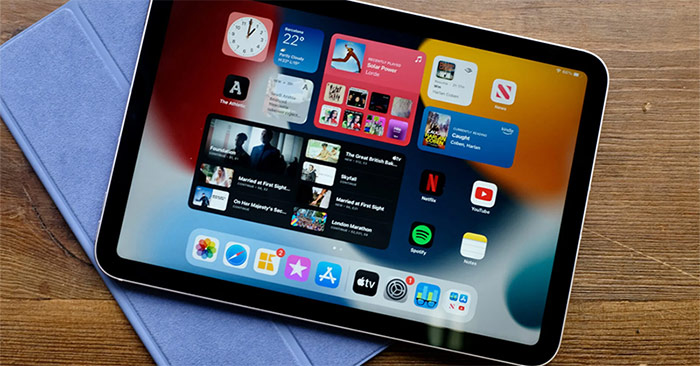Microsoft confirms 22H2 is the final version of Windows 10, reducing download package size
Earlier this week, Microsoft released the latest non-security preview update for Windows 10 22H2. In the update's changelog, Microsoft mentions that the latest Latest Cumulative Update (LCU) "will no longer have reverse differences", which will reduce the package size. download.
Today, Microsoft posted a new blog entry with additional information about this change. As it turns out, the Windows team is using features first created for Windows 11 to reduce download sizes for new Windows 10 updates.
Microsoft first explained how the company's engineering team is reducing Windows 11 download package sizes in October 2021, stating:
For system version data that requires forward and reverse delta pairs, 'making backward update data' provides a way to efficiently distribute forward delta to the machine, and requires the machine to maintain a path back to the state. initial state. Microsoft has successfully used this method in Windows 11, reducing the update package size by 40%.
Today's blog post says the Windows development team is now "bringing similar functionality to Windows 10, version 22H2." As a result, users will see the download package size decrease quite a bit. The Windows 11 "Patch Tuesday" update released on April 9 has a capacity of about 830MB. A non-security update released earlier this week for Windows 10 reduced the download package size to just 650MB. This reduction in LCU packet size provides several key benefits such as reduced bandwidth usage, faster downloads, reduced network traffic, and improved performance on slow connections.
After nearly nine years of active development and support, it's time for Microsoft to release the final version of Windows 10. 22H2 is officially the last version of Windows 10 that Microsoft releases to the public, expected to end support on October 14, 2025.
This announcement means you should not expect further feature upgrades for Windows 10 to be released in the near future. However, Microsoft will certainly continue to offer Windows 10 Enterprise, Education, Home, and Pro SKUs with monthly security patches and periodic minor bug fixes. As for current LTSC releases, they will remain supported after October 14, 2025, as described in Microsoft's official documentation.

Additionally, Microsoft announced plans to release the first Windows LTSC package. Windows 11-based Long-Term Servicing Channel (Enterprise and Enterprise IoT) is scheduled to launch in the second half of 2024, meaning companies now have enough time to plan and deploy the upgrade. from Windows 10 to 11. Microsoft said it will share more information when updates are scheduled for release.
Microsoft has repeated many times that they definitely have not abandoned Windows 10, at least not in the next few years. One thing that Windows 10 users can rest assured about is that the operating system will continue to receive regular feature updates and patches from Microsoft for about another year.
You should read it
- Link Download Microsoft Office 2019
- Microsoft's top 10+ best rated mobile apps of 2019
- Instructions for creating the fastest Microsoft account
- Microsoft Office is now Microsoft 365. Here's how you could get it for free
- Microsoft will also have smart watches
- How to Become a Microsoft MVP
- 11 best tips to get started with Microsoft Loop
- Link Download Microsoft Word 2019
- Link download Microsoft Teams 1.3.00.3564
- 15 interesting features to use in Microsoft 365
- What is Microsoft Store AI Hub?
- Link download Microsoft Excel 2019
May be interested

A programmer discovers a security hole that could bring down the global system

What's special about Apple's 'Let Loose' event?

Chinese magician sells SSD 1080 Pro at super cheap price even though Samsung hasn't launched it yet

Qualcomm launches Snapdragon X Plus for PCs running Windows 11 ARM

Steve Jobs predicted wrong

The new 11-inch iPad Pro may be in short supply due to a shortage of OLED screens






 Microsoft confirms 22H2 as the final version of Windows 10, announces Windows 11 LTSC
Microsoft confirms 22H2 as the final version of Windows 10, announces Windows 11 LTSC Microsoft confirms that Windows 11 22H2 has reduced performance when copying large files
Microsoft confirms that Windows 11 22H2 has reduced performance when copying large files How to install Windows 10 22H2 now
How to install Windows 10 22H2 now How to upgrade to Windows 11 22H2 on unsupported hardware
How to upgrade to Windows 11 22H2 on unsupported hardware The simplest and most effective guide to fixing Windows 11 22H2 update errors
The simplest and most effective guide to fixing Windows 11 22H2 update errors Windows 11 21H2 is about to die, Microsoft pushes to update version 23H2/22H2
Windows 11 21H2 is about to die, Microsoft pushes to update version 23H2/22H2